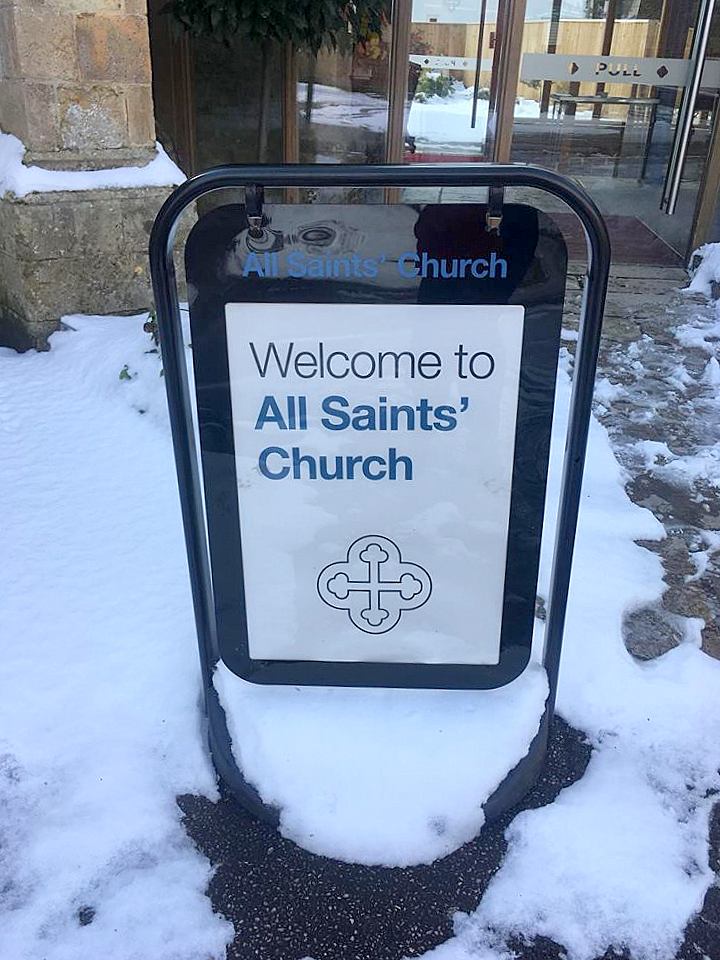“These mainly listed buildings sit at the heart of almost every community – we are squandering a precious legacy.”
“Interesting how many listed building are for religious use and are in need of repurposing. New community uses for heritage buildings and retrofitting high street properties will need consideration.”
.

When We Meet – All Saints Sidmouth
Churches and other religious buildings primarily function, of course, as places of worship – but they have always provided ‘social services’ as well.
To quote from the National Churches Trust:
Churches are increasingly being used a multipurpose community building. In medieval buildings this is taking them back to their original use, when the nave was used for a wide range of community activities and services.
Many churches now host a variety of community activities. These can include play groups, scouts and guides, women’s and men’s groups, keep fit, choirs, councilors surgeries, drop in centres, coffee morning and much more. In some areas they are also venues for vital services including school halls, libraries, cafes, health centres, training sessions, community shops, outreach post offices, food banks or a Citizens Advice Bureau.
Community space and increasing use | National Churches Trust
Here’s another similar list – but from the Building Conservation organisation:
Community use of churches ranges from provision of support services for various groups such as the elderly, and the homeless through to setting up community cafés, hosting concerts and exhibitions, providing venues for civic events, adult education, IT training, after-schools clubs and increasingly to help deliver essential services such as post offices, community shops and doctors’ surgeries, and police stations.
Church Buildings and the Community
As a local correspondent notes:
Interesting how many listed building are for religious use and are in need of repurposing. New community uses for heritage buildings and retrofitting high street properties will need consideration.
And this very much echoes a piece by Simon Jenkins, former head of the National Trust, writing in the weekend Guardian:
These mainly listed buildings sit at the heart of almost every community – we are squandering a precious legacy
Though standing mostly empty and underused, churches have an eerie hold on local people, Christians and atheists alike. The church is their history, their museum, their place of ceremony, their source of comfort in distress. Clergy and volunteers supply a supporting social service, gamely put by the National Churches Trust as worth £55bn a year to the national wellbeing. Many are stunningly beautiful, many others are aloof, dishevelled and grim. But they exist and are not going to vanish. All they can do is fall down, as Britain’s medieval castles did centuries ago. A derelict ruin at the centre of every town and village in Britain is not a fun prospect…
But demolition is unlawful and converting historic churches to houses would be a tragedy. New uses are now slowly being found by the more enterprising parishes (and denominations). Churches are already hosting orchestras, theatres, coffee bars, post offices, village shops, libraries, art galleries, yoga classes, playgroups, campsites, farmers’ markets and even breweries. As austerity shuts down urban youth clubs, we should open churches to young people, as at the successful St Mary’s Primrose Hill in London. There is a plan to turn ailing post offices into joint banking hubs. Why not use churches? These are precisely the services being evicted from high streets under government planning reforms. Thousands of village shops must be closing. Pubs are now frequently shutting. Perhaps they should merge. Beer was sold in naves in the middle ages…